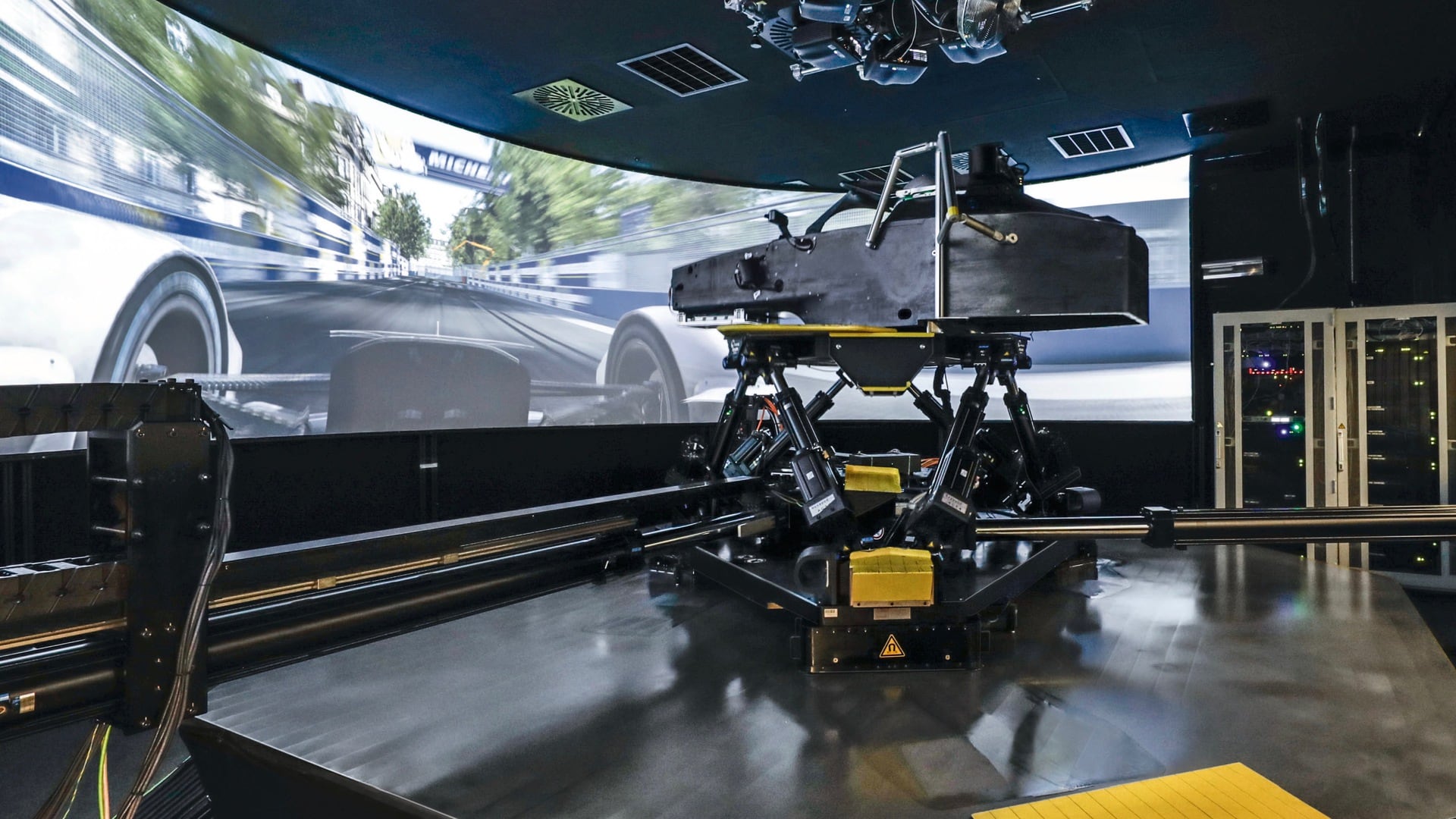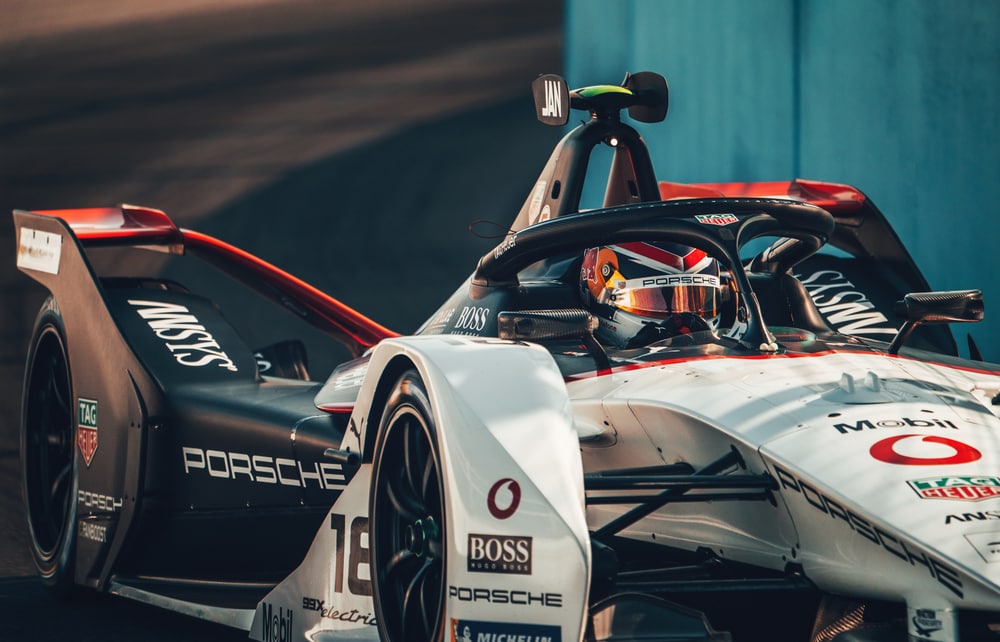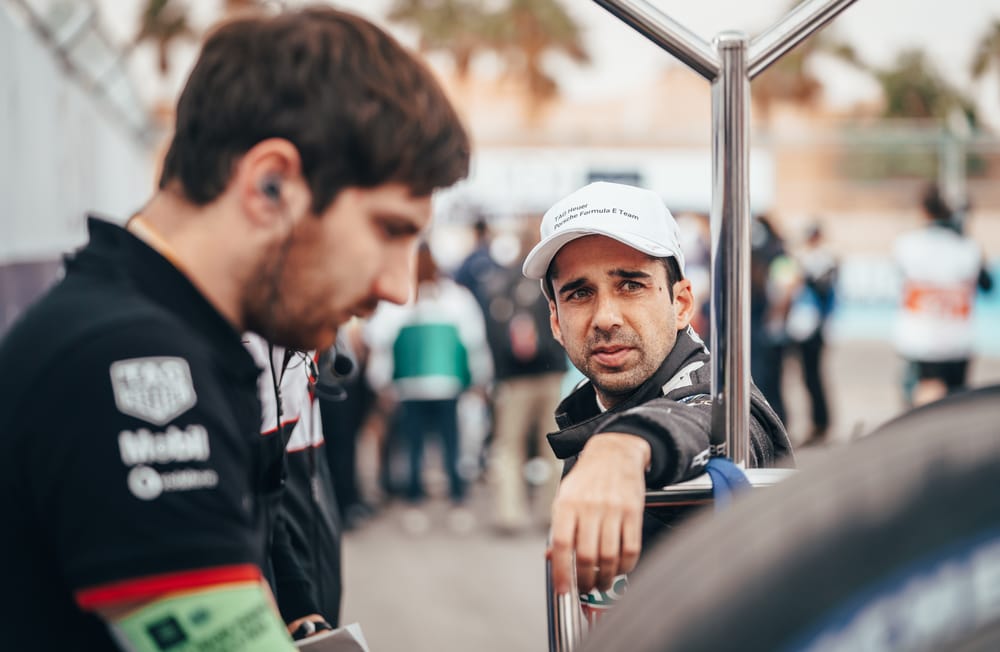Porsche: The spider in the computer web
IMPORTANT PREVIOUS WORK The Porsche racing simulator is a hungry high-tech monster that feeds on data. Neel Jani uses it to train the energy management that is so important in Formula E. The system fills the large windowless room. Neel Jani climbs up and into the cockpit of the simulator. At first glance, the monocoque is reminiscent of a soapbox, but [...]

The system fills the large windowless room. Neel Jani climbs up and into the cockpit of the simulator. At first glance, the monocoque is reminiscent of a soapbox, but it has all the elements of the new Porsche 99X Electric that are crucial for the simulator test.
Just like in a real racing car
The field of vision is just right, Jani is holding the original steering wheel in his hands - every button has exactly the same functions as in the real racing car. The 180-degree panorama of the Paris racetrack unfolds in front of him. Behind him in the control room, with a view of their sim racer, engineers have taken their seats in front of their computers.
"Loud and clear," confirms Neel Jani over the radio. For a total of four hours, the 35-year-old driver from Seeland raced around the French street circuit, which will host the ninth E-Prix of the sixth Formula E season on April 18.
Only the g-forces are missing
It gets loud in the room when Jani drives over kerbs at full speed. Walls and bends literally fly towards the driver, who can feel every change of direction, braking maneuver and the smallest bumps up in the cockpit. What he doesn't feel are the long-lasting high g-forces, which in reality put a lot of strain on the neck muscles in particular when decelerating and cornering.
As at sea, visual perception and signals from the vestibular system do not match. The brain has to abstract, and some riders even feel nauseous. From the outside, the scene seems almost unreal: the spider glides back and forth jerkily on the polished steel plate, twists and shakes. This goes on for a full 45 minutes until the virtual race ends.

Important preliminary work
The profiles fed into the simulator are highly precise, based on scans accurate to the millimeter. In this way, the training provides detailed knowledge of the track and at the same time allows a specific basic set-up for the individual Porsche racing cars.
However, the most important task of Formula E preparation in the simulator is to test various software programs for efficient energy management. As much electrical energy as possible must be available at every second. The standard battery, which is fully charged at the start, has a capacity of 52 kilowatt hours. During the race, it is continuously recharged by recuperation during braking. This energy recovery takes place automatically via the electric motor on the rear axle.
Calculation with many unknowns
The race itself is a calculation with lots of unknowns. The software developers devise various operating programs. These are among the teams' best-kept secrets. The portfolio of software functions is growing daily, and the drivers have to be able to handle them with confidence. Because everything depends on them in the race.
"The engineers can hardly help us from the pits," says a visibly exhausted Neel Jani as he climbs out of the simulator. "Telemetry is forbidden in Formula E, we have to decide for ourselves which mode to use."

This abridged article by Heike Hientzsch was published in full length in Christophorus magazine.
christophorus.porsche.com/christophorus-site/en









